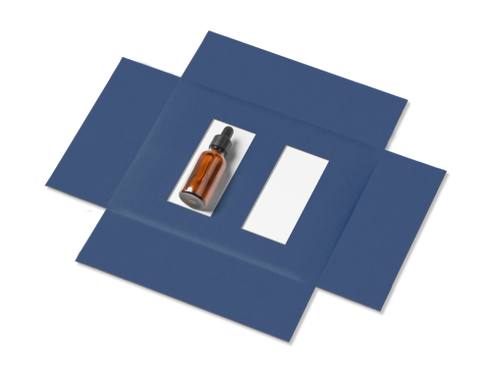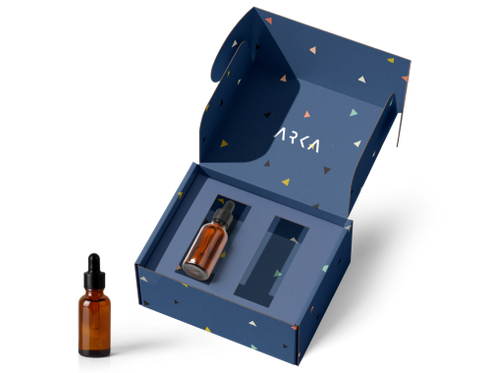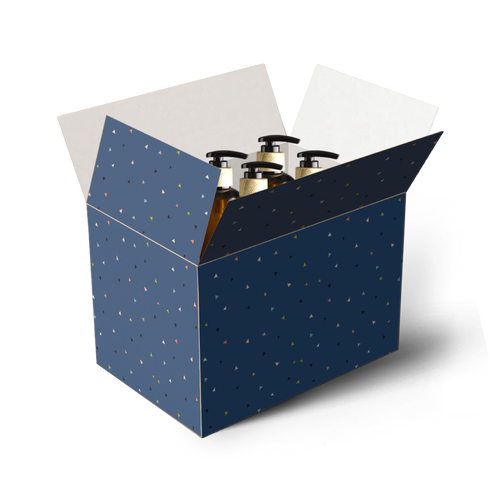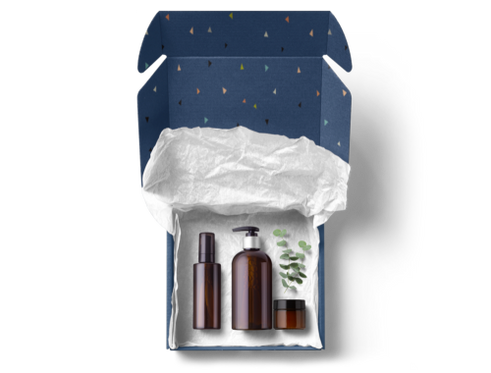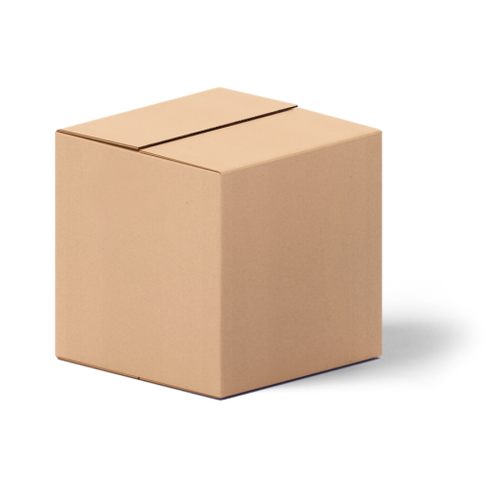Packaging 101: The Complete Guide
- Packaging 101
- Types of Packaging
- Aseptic Packaging
- Blister Packaging
- Biodegradable Packaging
- Bulk Packaging
- Carbon Neutral Packaging
- Circular Packaging
- Clamshell Packaging
- Compostable Packaging
- Cornstarch Packaging
- Corrugated Packaging
- Discreet Packaging
- Ecommerce Packaging
- Flexible Packaging
- Frustration Free Packaging
- Retail Packaging
- Secondary Packaging
- Smart Packaging
- Sustainable Packaging
- What is a PR Package?
- What is a Poly Mailer?
- Packaging Design Ideas
- AI Packaging Design
- Bakery Packaging Ideas
- Bath Bomb Packaging Ideas
- Bath Salt Packaging Ideas
- Body Butter Packaging Ideas
- Body Oil Packaging Ideas
- Body Scrub Packaging Ideas
- Brownie Packaging Ideas
- Cake Packaging Ideas
- Cake Pop Packaging Ideas
- Candle Packaging Ideas
- Candy Packaging Ideas
- Canva Packaging Design
- Chocolate Packaging Ideas
- Cinnamon Roll Packaging Ideas
- Clothing Packaging Ideas
- Coaster Packaging Ideas
- Coffee Bag Design Ideas
- Cookie Packaging Ideas
- Cosmetics Packaging Design
- Cotton Candy Packaging Ideas
- Cupcake Packaging Ideas
- DIY Packaging Ideas
- Dog Treat Packaging Ideas
- Food Packaging Ideas
- Empanada Packaging Ideas
- Etsy Packaging Ideas
- French Fries Packaging Ideas
- Frozen Food Packaging Ideas
- Hair Extension Packaging Ideas
- Handbag Packaging Ideas
- Jewelry Packaging Ideas
- Keychain Packaging Ideas
- Lash Packaging Ideas
- Lip Gloss Packaging Ideas
- Macaron Packaging Ideas
- Minimalist Packaging Ideas
- Mug Packaging Ideas
- New Employee Welcome Kit Ideas
- Packaging Colors
- Packaging Inserts Ideas
- Packaging Logo Design
- Packaging Typography
- Perfume Box Design Ideas
- Pizza Box Design Ideas
- Popcorn Packaging Ideas
- Scarf Packaging Ideas
- Skincare Packaging Design Ideas
- Soap Packaging Ideas
- Sock Packaging Ideas
- Sticker Packaging Ideas
- Sunglass Packaging Ideas
- Sustainable Packaging Ideas
- Tea Packaging Ideas
- Wax Melt Packaging Ideas
- Weed Packaging Ideas
- T-Shirt Packaging Ideas
- Wine Packaging Design Ideas
- What is a Packaging Engineer?
- Types of Packaging Materials
- Chipboard vs Cardboard
- Compostable Packaging Materials
- Alternatives to Plastic Packaging
- Edible Packaging Materials
- Food Packaging Materials
- Are Poly Mailers Recyclable?
- How to Recycle Cardboard Boxes
- How to Recycle Packaging Materials
- Medical Device Packaging Materials
- Mono Material Packaging
- Pharmaceutical Packaging Materials
- Plastic Food Packaging
- Protective Packaging Materials
- Reusing Packaging Materials
- Types of Packaging Foam
- Void Fill Packaging
- What is Chipboard?
- What is Kraft Paper?
- Offset vs Digital Printing
- RGB vs CMYK Printing
- Screen Printing vs Digital Printing
- Screen Printing vs Sublimation
- What is a Dieline in Packaging?
- What is Die Cutting?
- What is Digital Printing?
- What is Flexographic Printing?
- What is Glassine Paper?
- What is Offset Printing?
- What is Spot UV Printing?
- Why is 300 DPI Good for Printing?
- How to Estimate Shipping Costs
- How to Pack Glass for Shipping
- How to Mail a Bubble Mailer
- How to Make a Shipping Label
- How To Measure Box Dimensions and Sizes
- How to Ship Alcohol
- How to Ship Artwork
- How to Ship Books
- How to Ship a Cake
- How to Ship Candles
- How to Ship Clothes
- How to Ship Cookies
- How to Ship Food
- How to Ship a Laptop
- How to Ship a PC
- How to Ship Plants
- How to Ship Shoes
- How to Ship Vinyl Records
- Packaging Symbols
- Shipping Large Items
- What is a Delivery Exception?
- What is Shipping Insurance?

Meet Kyla Moore, the dynamic project coordinator at Arka, who is driven by her passion for sustainable packaging. She is dedicated to assisting businesses.
What is Aseptic Packaging and How Does It Work?
The definition of aseptic packaging is actually quite easy to understand. It is a manufacturing procedure related to different goods like food, medicines, vegetables, milk, and similar products. All these contents are sterilized separately from the packaging itself. After that, the goods are placed in the package/container that is sterilized as well.
So, how does the aseptic packaging process work? The purpose of this packaging type is to ensure a high temperature that will maintain the freshness of the goods inside. Apart from that, it has the purpose of killing all the microorganisms that can negatively impact the quality of food and beverage.
6 Advantages of Aseptic Packaging
We do not want to say that everything around aseptic packaging is perfect. Certain challenges and considerations also exist. Yet, it is worth mentioning that the number of advantages of aseptic packaging is much larger. All those advantages can help you improve your overall business success. There are six of them we would like to highlight, and they are:
• Preserving Product Quality: multiple factors can reduce the quality of the products. Thanks to the properties of aseptic packaging and a sterilized environment, the quality of those products will remain untouched. It will remain the same from the moment it is packed in the warehouse until the moment it reaches the final destination.
• Expanded Shelf Life: the same type of packaging can also increase the product's shelf life. Believe it or not, these products can remain outside of the refrigerator for between 6 and 12 months. Businesses will have enough time to sell them before their quality reduces. It will be unnecessary to replace them with new products and experience additional costs because of that.

Credits: Derrick Lin
• Ensuring Safety: damage to all sorts of goods can appear during the transportation procedure. These products can’t be reused or fixed, which is why they need to have appropriate protection. Aseptic packaging has a strong structure which ensures enough-strong layer of protection. Due to its properties, it can resist different weather conditions and protect the products from any microorganisms.
• Reduced Shipping and Distribution Costs: aseptic packaging reduces shipping expenses in multiple ways. First of all, aseptically packaged products can be maintained and stored at ambient temperature. More precisely, they will need to be stored in a place that is between 68 and 77 degrees Fahrenheit warm. That does not cause any additional costs. Apart from that, all the aseptic packages are compact and lightweight. That especially counts when we compare them with traditional packaging. Because of that, more goods packed this way can be transported at once, resulting in lower transportation fees.
• Ne Need for Preservatives: preservatives are used for all products of this type that are not aseptically packaged. On the other hand, aseptic packaging is completely sterilized and safe for the products. Entrepreneurs do not have to spend additional money on them. Plus, they can use real ingredients that an average consumer in the world prefers more.
• Eco-Friendly: are you willing to support the green world? Using sustainable packages is one of the options to do such a thing. Fortunately, aseptic packaging is always made out of sustainable materials. Plus, their production does not require a lot of energy, which is another sustainable method that green businesses practice.
Challenges and Considerations of Aseptic Packaging
We must admit that there are not many challenges that entrepreneurs need to pay attention to. Yet, that doesn’t mean they can completely relax. There are a couple of things that require more attention, and they are:
• Compatibility of the Product: unfortunately, it is impossible to pack every single product in this type of packaging. Multiple sensorial changes appear after the entire procedure, which makes this packaging incompatible with certain products. We will later explain which ones are a perfect match.

Credits: Futura Photography, Rodrigo Chapa
• Equipment Complexity: using equipment necessary for the aseptic packaging process requires knowledge and skills. Apart from that, we must highlight that these machines cost a bit more. The best possible solution is to hire a manufacturer to create these packages in larger quantities.
• Upfront costs: despite machines, some other things require higher upfront costs. Some of them are training the staff, purchasing additional instrumentation, ensuring that packaging complies with all regulations, etc. Ultimately, your aseptic packaging must also be compatible with secondary and tertiary packages. That means you must spend more time, money, and effort designing these packages.
Aseptic Packaging Process and Techniques
The entire aseptic packaging process is pretty easy to understand. The entire process is focused on the sterilization of the packaging and containers. It contains 5 different steps that have to be made. Otherwise, the benefits mentioned above are not going to be present.
Pre-Sterilized Containers
The first essential step of the procedure is the pre-sterilization of the containers. Examples of containers that need sterilization are cartons, pouches, bottles, and many others. This step ensures that neither of the microorganisms that can harm the safety and quality of packaging survive. Also, it ensures that the entire space is completely sterilized until the moment of filling.

Sterilization of Packaging Materials
The second crucial method of the aseptic packaging process is sterilizing packaging materials. There are two methods used - heat-based and chemical sterilization. In the first case, some of the techniques used are dry heating and steam sterilization. On the other hand, chemicals used for sterilization are peracetic acid and hydrogen peroxide. Without these methods, the expanded shelf life cannot be guaranteed.

Credits: Visipak by Sinclair & Rush
Aseptic Filling
This method is the most advanced on this list. Packaging manufacturers are filling the containers that are previously sterilized with sterile products. The entire procedure must be done in a strictly controlled environment. The equipment used for aseptic filling is high-tech, ensuring the prevention of contamination. This method separates packaging materials and products in different sterile environments. The purpose is to ensure a prolonged shelf life for the product! Products compatible with this aseptic packaging method are different types of beverages, pharmaceutical products, and even some types of food.

Credits: Struck
Hermetic Sealing
This method aims to ensure complete isolation of the product from any external impact. Manufacturers must ensure a leak-proof seal for the containers after the filing. The hermetic sealing ensures that microorganisms can’t enter the package after the product is placed inside. Plus, it keeps the quality of the product by protecting it from air and moisture.

Credits: apecusa.com
Packaging Inspection
Everything done by the aseptic packaging manufacturers must be controlled by experts. If there are certain defects or leaks, they must be detected before the packaging leaves the warehouse. Some of the tests done are pressure testing, visual inspection, and x-rays inspection. All packages with certain damage will be rejected with no excuse. On the other hand, those approved by inspection can be distributed to the consumers.

Credits: Jason Goh
Aseptic Packaging Materials
Inspection of aseptic packaging is really strict. We completely support that! There is no place for mistakes when businesses work with food and beverage. These packages must be made of strong and durable materials to ensure the mentioned benefits. Some of the most popular types of packaging today are:
• Paperboard
• Plastics
• Metals
• Laminates
• Polyethylene
• Film foil, etc.

Credits: Derrick Lin
Aseptic Packaging Examples and Applications in Industries
One of the main benefits of aseptic packaging is its versatility. They can be used for a variety of different goods. However, these products are mostly focused on some basic needs of people and health. On the other hand, the usage of these packages is mandatory in some cases by the regulations. You can use them for:
• Beverage (juices, soups, sauces, different dairy products, and baby food)
• Pharmaceuticals
• Cosmetics
• Chemicals
• Different industrial products

Credits: Derrick Lin
We once again need to repeat that regulations for these packages are extremely strict. Imagine that you do not sterilize the environment for baby food appropriately. The consequences would be fatal. Because of that, if you can’t handle aseptic packaging on your own, you should ask for help from packaging manufacturers like Arka. We have enough experience to ensure larger quantities of aseptic packages for a very affordable price. Working with us will ensure your peace of mind and better profit margins.
Final Thoughts
We are glad that people now understand what aseptic packaging is and why it benefits various businesses. Get familiar with all the aseptic packaging processes to understand how things work. Don’t forget strict regulations that must be respected.
If you need help, you can always contact Arka, and we will supply you with the necessary packages. We have packaging solutions for any niche; whether you need custom mailer boxes, shipping boxes, or retail boxes, we are here to help! Let’s create your perfect packaging today.
FAQs on Aseptic Packaging
What foods are packed in aseptic packages?
Some of the foods packed in aseptic packaging are liquid eggs, tomatoes, soups, whipping creams, fruits, etc.
Does aseptic packaging require refrigeration?
Aseptically packaged products can remain outside of the refrigerator for between 6 and 12 months (depending on the product type).
How long can products packaged using aseptic packaging remain fresh?
The freshness of the products packed in aseptic packages can remain for at least 6 months. In some cases, it can go up to 1 year. These pieces of information are stated on the packaging surface.
Does aseptic packaging affect the taste of products?
Aseptic packaging preserves the nutritional value and overall taste of the goods stored inside. It is a completely safe packaging solution that ensures prolonged shelf life.

